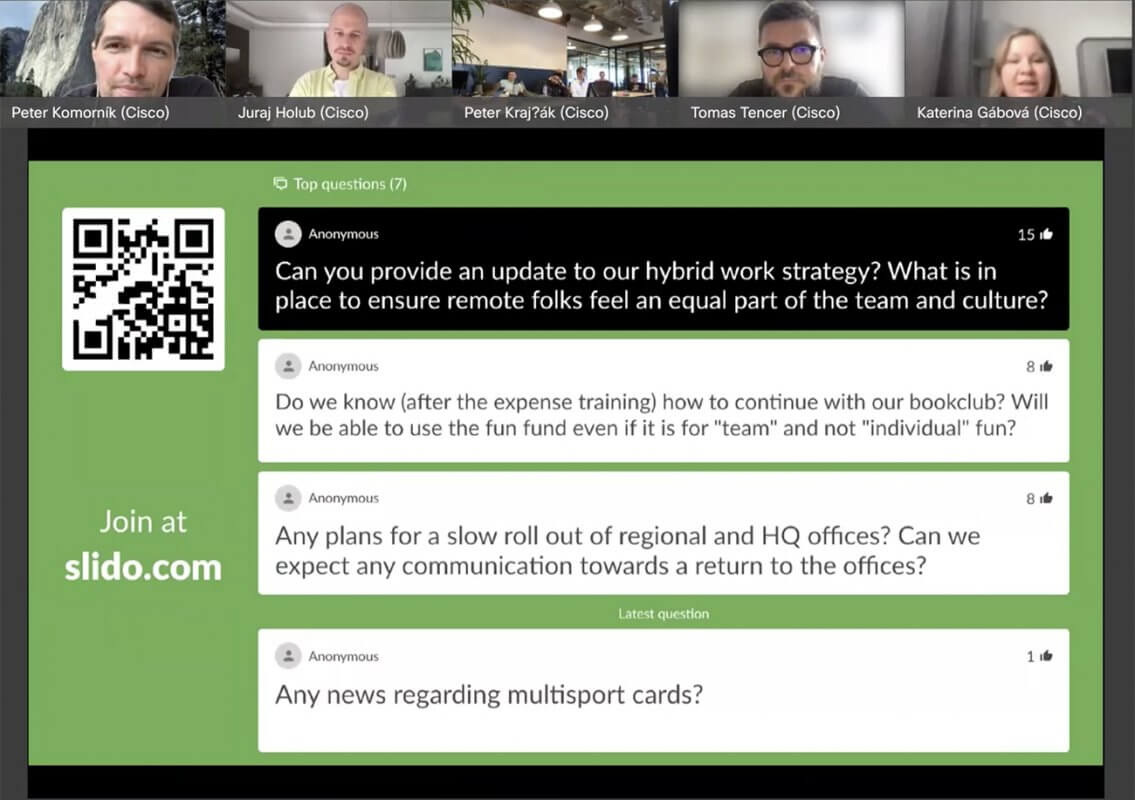The 2020s have emphasized how important it is for leaders to stay open to questions from their people.
Giving the team a safe space to ask questions is essential for building trust and open culture.
However, in uncertain times, it’s tempting for leaders to just put their heads down and go directly into crisis mode, focusing on fighting the fire in front of them instead of talking about it. They might not have many of the answers anyway, so what good would it do to admit it in front of everyone?
This is clearly the wrong approach. Especially in the face of a crisis, staying open to people’s questions becomes even more important – Are their jobs at risk? How’s the situation going to affect the business? Should they be worried?
AMA as a tool for transparency
If leaders don’t step up, people will go looking for the answers elsewhere resulting in fear and uncertainty which might paralyze operations exactly at a time when they need their whole team to row in the same direction.
Instead of avoiding addressing the tougher questions, it’s essential that leaders face the situation head-on, providing clarity in a time of uncertainty. AMAs are powerful tools to do exactly that.
A great example of this was a recent AMA session with the Jamaican Minister of Health and Wellness, who encouraged citizens to submit any questions they had about the measures the government was taking in response to the coronavirus outbreak. Before the session, they shared a Slido link on Twitter collected over 380 questions, and addressed the top-voted ones during a live-stream session! You can watch it here.
At Slido, we dedicate the last 20 minutes of our monthly all-hands meetings to an AMA. Every month, we receive dozens of questions and as our feedback survey indicates, for many people the AMA session is the most valuable part of our all-hands.

During 2020, we realized that doing AMA just once a month was no longer enough. Therefore we decided to run a dedicated AMA session this week to address our team’s top questions connected with the coronavirus outbreak. And if the situation continues to evolve, we might change it into a regular session every Friday.
As leaders, we might not have every answer, but it’s extremely important to talk about the situation openly with our employees and make them feel included in the conversation. I believe we have a duty to hear our team out and reassure them that we’re in it together.
Read also: Why Companies Like TomTom Use Slido Q&A
How to pull off a successful AMA session
AMA sessions are actually quite easy to set up.
Share a link to Slido Q&A via Slack or email a few days before the session so that people can start posting their questions in advance.
Send a quick reminder once or twice throughout the week. Usually, you should get most of the questions already in advance, which gives you time to prepare your answers.
During the AMA session, spend the first few minutes summarizing the latest developments and sharing important updates.
Before jumping into people’s questions, acknowledge that you might not have all the answers, but that you will try to address all questions as best as you can, or get back to them later.
It’s a great practice to ask one of your colleagues to join you as a moderator on stage to read the questions. This makes the session flow much more smoothly.

Start answering the questions one by one based on their popularity. Your colleague can help you group questions with similar topics to create a natural feeling of conversation.
Five minutes before the end of the AMA, encourage your team to go to Slido one last time and upvote 1-2 questions that they really want to hear answered. That way, you will make sure that no recent questions are left ignored.
If there are still some outstanding questions at the end, it’s good practice to address the top 10 afterward in writing, and share it as a memo with your team.
One more thing – don’t forget to record the session so that people who couldn’t attend may watch it later.
Wrap up
That’s it. Pulling off an AMA session for your team is not that difficult.
The hard part is to find the time (and sometimes courage) amid everything else that’s going on, to stand in front of your people, prepare for their questions, and give them the honest answers they deserve.
Yes, running an AMA at times like these can be tough and may feel uncomfortable, but it’s an investment into your team. Especially in turbulent times, we need our leaders to step up and keep their people aligned and safe.




